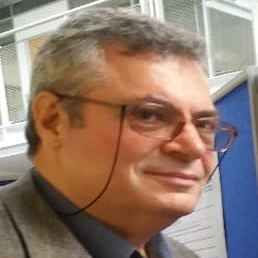Improved Anaerobic Digestion of Sludge Biosolids for Energy and Nutrient Recovery
A special issue of Water (ISSN 2073-4441). This special issue belongs to the section "Wastewater Treatment and Reuse".
Deadline for manuscript submissions: 10 October 2024 | Viewed by 2634
Special Issue Editors
Interests: separation sciences and related technologies; wastewater/water treatment; membrane fouling; aerobic/anaerobic digestion; recovery/removal of metals from liquid waste streams; physicochemical methods for the treatment of contaminated water sources or of wastewaters, biological/aerobic or anaerobic treatment methods; combinations of biological and physicochemical methods; treatment/recycling issues of toxic industrial solid wastes; hydrometallurgical; physico-chemical (solidification/stabilization); thermal (vitrification), or appropriate combinations of treatment processes; carbon capture utilization and storage (CCUS)
Special Issues, Collections and Topics in MDPI journals
Interests: environmental biotechnology; waste and watewater treatment; anaerobic digestion
Special Issues, Collections and Topics in MDPI journals
Interests: environmental biotechnology; waste and wastewater treatment; anaerobic digestion
Special Issues, Collections and Topics in MDPI journals
Special Issue Information
Dear Colleagues,
This Special Issue mainly deals with the current aspects of anaerobic digestion (AD). The AD treatment process is considered among the main technologies aiming at (but not limited to) the recovery of energy from high-loaded organic wastes, such as sludge biosolids, and leading to their stabilization and subsequent reuse, e.g., for agricultural purposes (soil conditioner).
For this reason, AD is usually included among renewable energy sources as the main product is the produced biogas (a mixture mainly consisting of methane and carbon dioxide used as an alternative fuel source), as well as the digestate (semi-solid stabilized organic residues), which could subsequently be reused as raw material for the production of several valuables (biofuels, chemicals, etc.)
This SI aims to summarize the current state of the art, indicating the recent trends of relevant research, such as the biogas upgrade aspects (separating most of the carbon dioxide content and producing high-grade biomethane), the further treatment of digestate (for the recovery of water, nutrients, etc.), as well as other alternative modern options. Improved biogas production can be achieved through, e.g., the application of appropriate sludge pre-treatment methods and the further utilization of gaseous streams (e.g., methane as fuel, carbon dioxide for industrial purposes).
Additional topics of interest which may be also included in this issue are life cycle assessment applications in anaerobic digestion, carbon footprint issues, zero carbon balance, the energy–water–waste nexus, the limiting of secondary pollution aspects created by AD operation, and other environmental and operational problems.
Prof. Dr. Anastasios Zouboulis
Dr. Panagiotis G. Kougias
Dr. Konstantinos N. Kontogiannopoulos
Guest Editors
Manuscript Submission Information
Manuscripts should be submitted online at www.mdpi.com by registering and logging in to this website. Once you are registered, click here to go to the submission form. Manuscripts can be submitted until the deadline. All submissions that pass pre-check are peer-reviewed. Accepted papers will be published continuously in the journal (as soon as accepted) and will be listed together on the special issue website. Research articles, review articles as well as short communications are invited. For planned papers, a title and short abstract (about 100 words) can be sent to the Editorial Office for announcement on this website.
Submitted manuscripts should not have been published previously, nor be under consideration for publication elsewhere (except conference proceedings papers). All manuscripts are thoroughly refereed through a single-blind peer-review process. A guide for authors and other relevant information for submission of manuscripts is available on the Instructions for Authors page. Water is an international peer-reviewed open access semimonthly journal published by MDPI.
Please visit the Instructions for Authors page before submitting a manuscript. The Article Processing Charge (APC) for publication in this open access journal is 2600 CHF (Swiss Francs). Submitted papers should be well formatted and use good English. Authors may use MDPI's English editing service prior to publication or during author revisions.
Keywords
- biogas valorization
- digestate treatment and stabilization
- resource recovery from organic wastes







